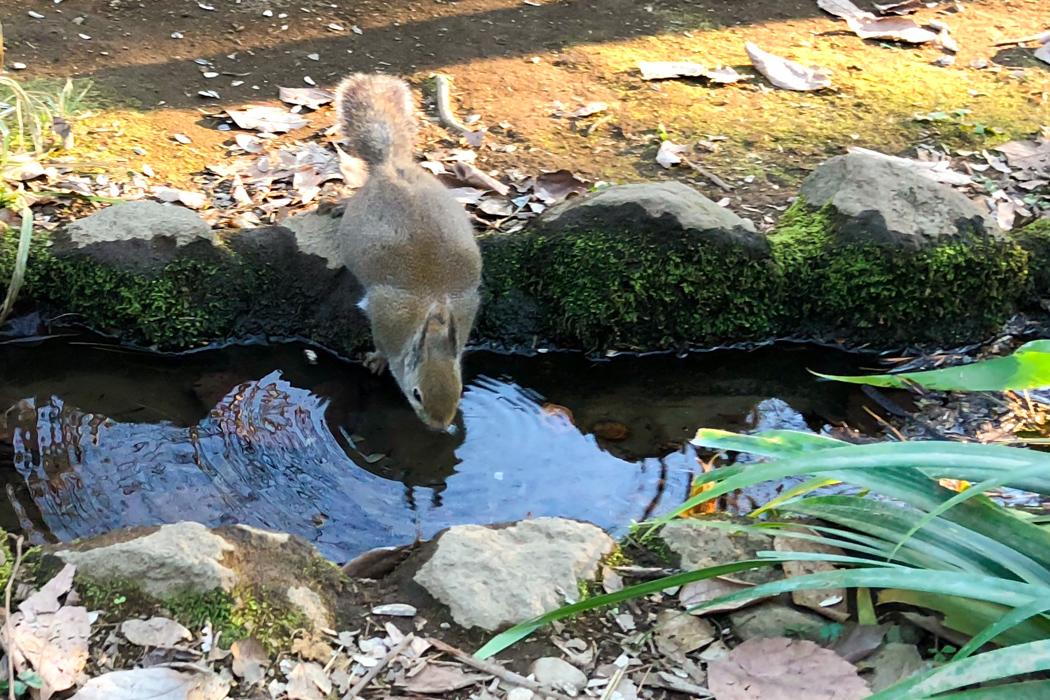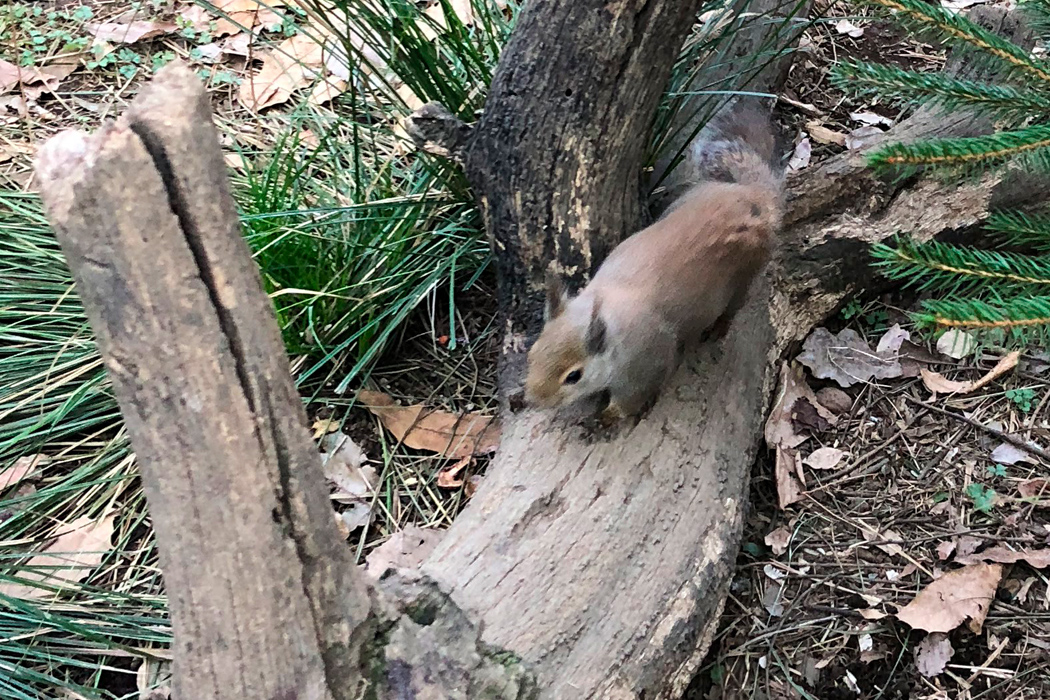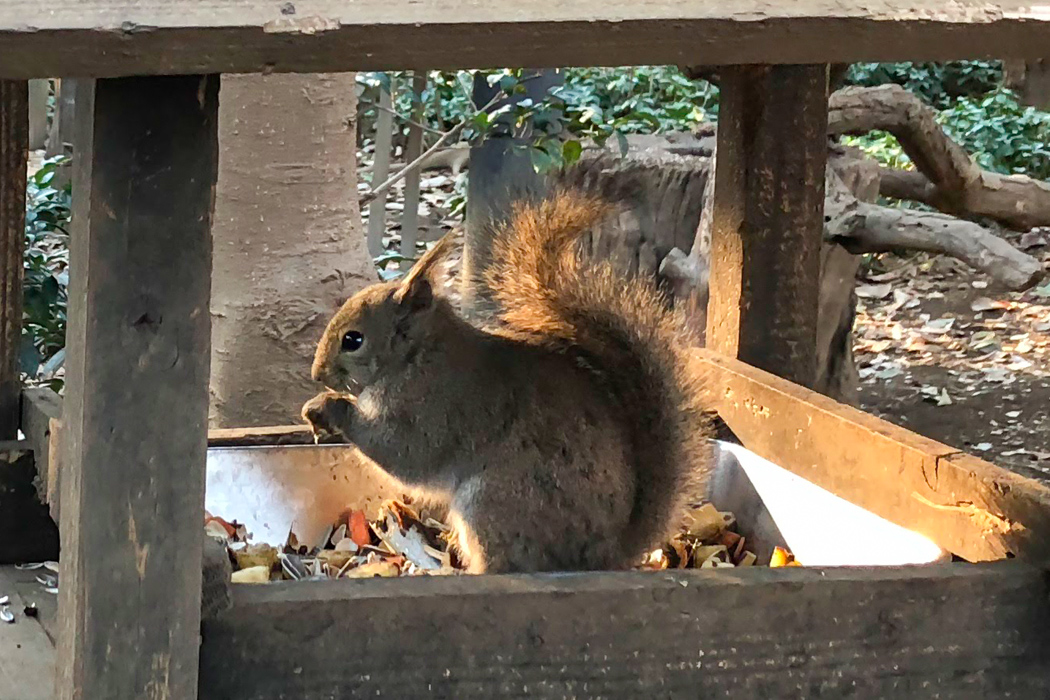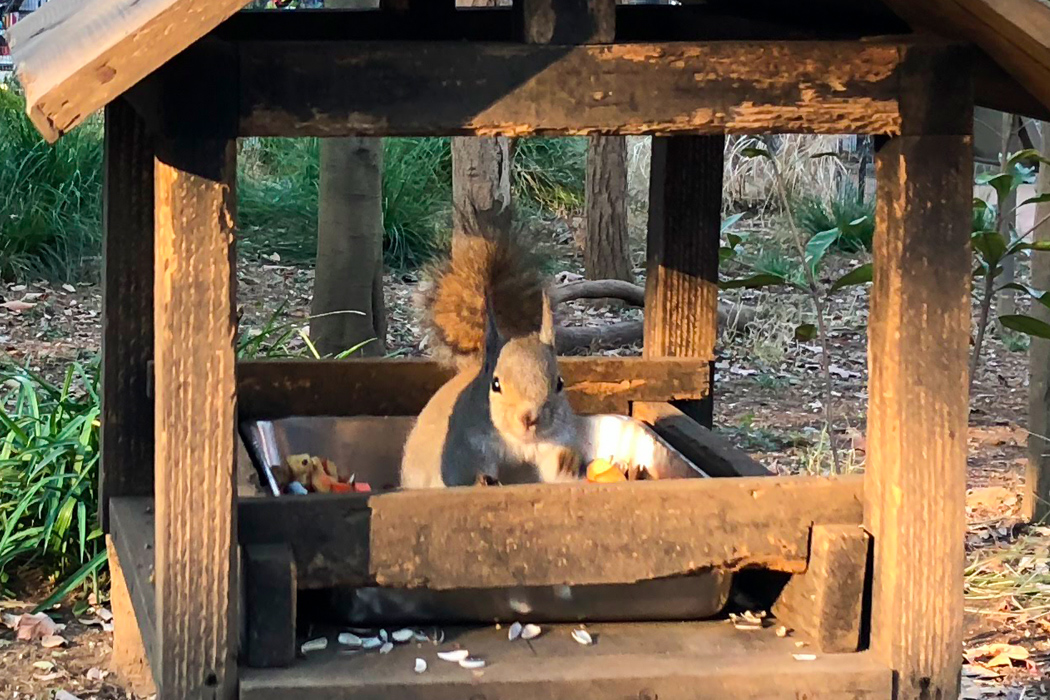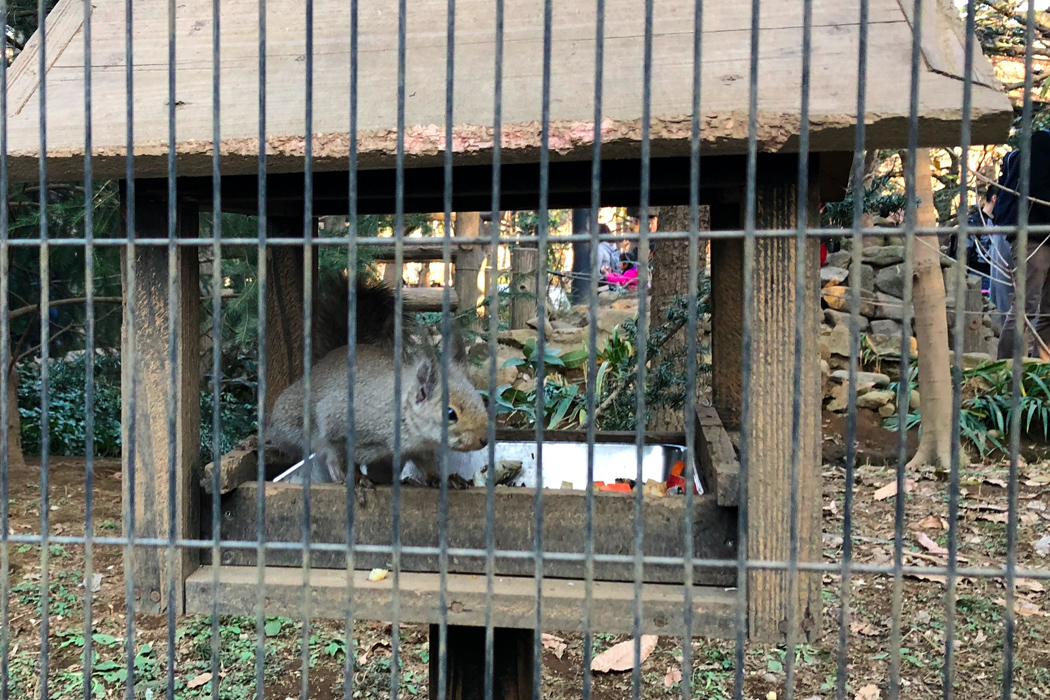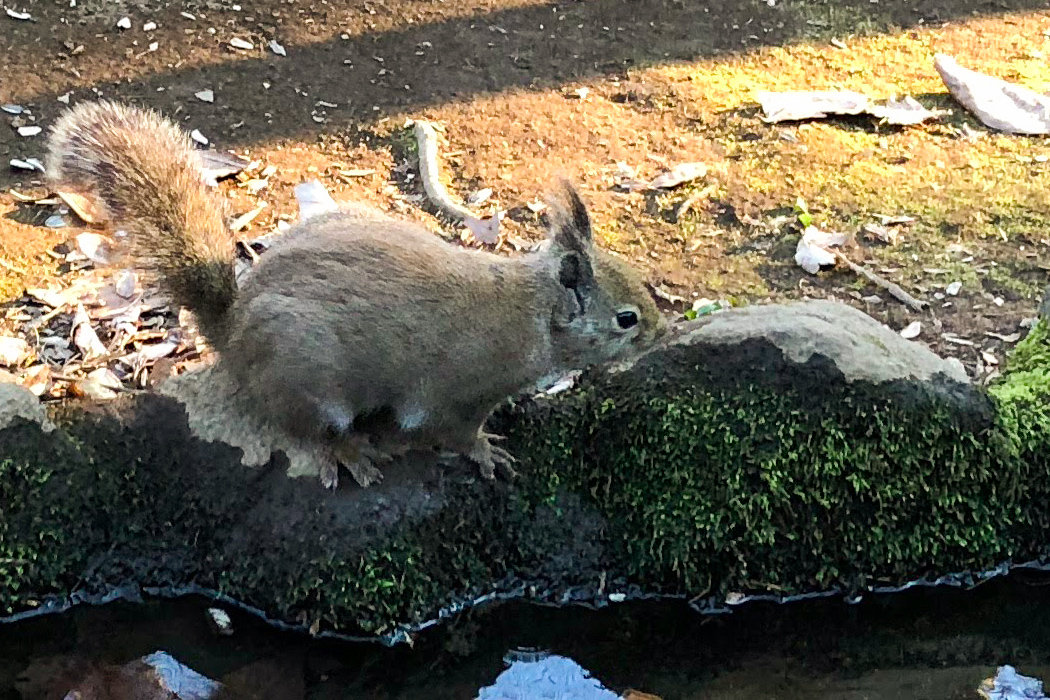
Japanese squirrel
Only trees such as acorns are buried in the ground and "stored".
| Scientific name | Sciurus lis |
| English name | Japanese squirrel |
| Japanese name | 日本栗鼠 |
| Classification | Mammalia |
| Classification details | Rodentia Sciuridae |
| Full length | about 16-22cm |
| Distribution | Honshu, Shikoku, Kyushu |
Characteristics
A brown or reddish brown squirrel. They live in coniferous forests from Honshu to Kyushu. They live mainly in trees and are active in the morning and at night. It rests in its nest at night. It moves quickly, and when it senses danger, it emits a warning sound to intimidate. They have large ears, and in winter hair grows at the tips of their ears.
Their natural enemies are foxes and birds of prey, but in recent years their numbers have been declining due to the declining forests in which they live. It is believed to have become extinct in the Chugoku and Kyushu regions.
How to distinguish from Taiwan squirrel
The Japanese squirrel is very similar to the Taiwan squirrel. The abdomen of the Japanese squirrel is white, while that of the Taiwan squirrel is brown. The Taiwan squirrel is slightly larger in length, sometimes exceeding 40 cm.
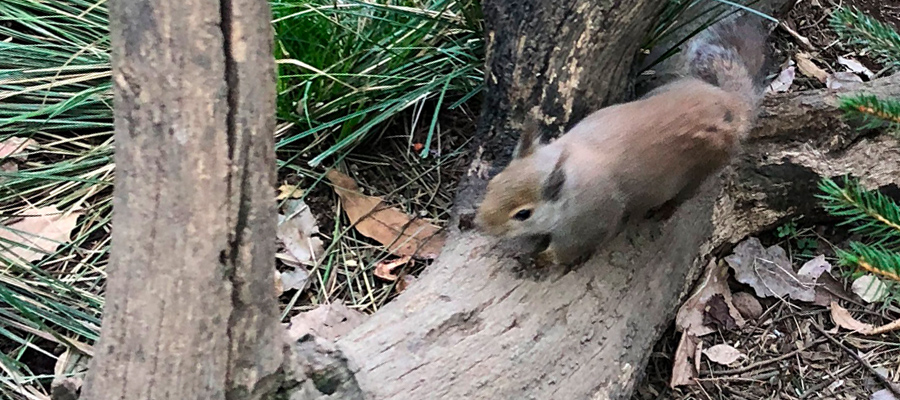
Ecology
It lives in a range of about 10 hectares, and is known for the fact that the range does not overlap between females. They are active all year round without hibernation. It is omnivorous and eats seeds, fruits and buds of plants as well as mushrooms and arthropods. It "stores" food in the ground and between branches for winter. The appearance of skillfully cracking a hard walnut shell with its front teeth is impressive. Lives for 3-5 years and breeds once or twice a year in spring.
Habitat
If you enter the Natural and Cultural Garden "Squirrel Path" in Inokashira Park, you can observe it up close. They sometimes cross in front of humans when moving from feeding ground to feeding ground. There are 5 squirrels in the birdhouse, and the appearance of their faces peeking through the round entrance is popular. The entrance of "Squirrel Path" has double doors so that you can't escape.
Pictures
Introducing a picture of Japanese squirrel.

Picture book
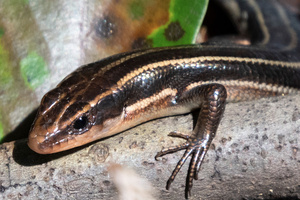
Far Eastern Skink
Became a different species from Japanese lizard (Plestiodon japonicus).......ead more.
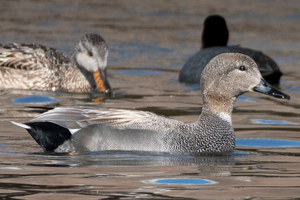
Gadwall
Gray body with fine black patterns.......ead more.
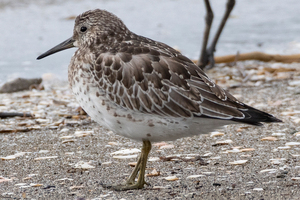
Great Knot
A little fat and round shape.......ead more.
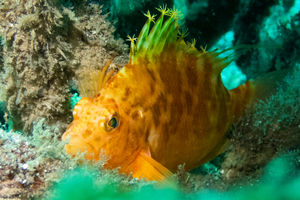
Yellow hawkfish
The tip of the dorsal fin spine is open.......ead more.

Honshu pipefish
Caudal fin screaming.......ead more.
